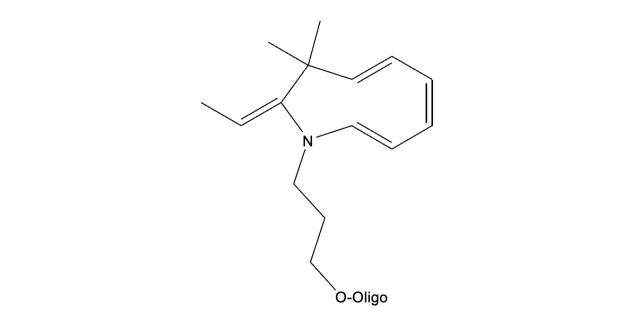By: David Clayton, Stephen Knight
Scientists working at the Great Lakes chemical company site in Manchester, UK have an interestingapproach to new product development. As well as developing their own new products, they are also responsible for analyzing their competitor’s products too. This branch of the giant US-owned company specialises in the manufacture of polymer additives and the analytical laboratory in Trafford Park, as well asproviding analytical services to R&D and manufacturing, specialises in de-formulating their rivals’ products.
Manufacturers use polymer stabilizers to protect a variety of products from premature fading— from outdoor seats to steering wheels to the colourful fibres used in carpets and upholstery, clothing and ropes. Theyare also incorporated into polyethylene pipes used for water and natural gas transmission to assurelong-term stability. Modern complex additives can help manufacturers keep their plants cleaner and safer, simplify processes, and boost efficiency by compressing several additives into precisely calibrated granular mixtures.
Plastics are now replacing metals at a faster pace than ever before. One reason is that special polymerstabilizer additives such as the antioxidants and UV stabilizers produced by Great Lakes can give newpolymer compounds many of their important higher performance characteristics. Such additives can extend the life of plastics and increase their range of use by helping plastic maintain its strength and colour consistency.
Every day we come into contact with many products that include polymers as they are the basis of all plasticarticles, including laboratory microplates, pipette tips, casings and housings, computers, and packaging. Polymer stabilizers, including antioxidants and UV stabilizers, are an integral part in the success plastic plays in our daily lives. They are added in small amounts to protect plastic performance by preventing loss ofmechanical strength, cracking, crazing, yellowing, and loss of gloss due to day-to-day exposure to air, heatand light.
The two main groups of stabilizers are Antioxidants and UV Stabilizers and these can sometimes be combined in to one additive. In every case the properties of each additive are closely matched to the stability and performance characteristics desired from a specific polymer. For example, phthalate esters are often used as plasticizer in laboratory plastic ware, but can leach from the surface if exposed to certain solvents, so materials must be carefully selected for each application.
The antioxident additives are a family based on phenolic resins with long chain aliphatic side chains. Theseare known as “hindered” phenolic resins Applications for hindered phenolic antioxidants include, polyethylene, polypropylene, ABS, polyester, polyamide, rubber, PVC, and styrenes. Within this broad range there are products suitable for specialist applications such as a metal deactivator for wire and cable and aphenolic antioxidant for polyurethane fibre.
The job of the analytical unit at Great Lakes is to find out what type of compounds their competition are using and to compare them with their own products. The problem with these polymer additives is that they are resistant solid granules that do not easily lend themselves to analysis. The process starts with treating the granules with toluene or another suitable solvent. After agitation on a heater/stirrer the additives should all be in suspension or dissolved in the toluene. The solids are separated and the supernatant is then treated according to which additive is being studied. An evaporation step then occurs which was formerly done on a rotary evaporator, but is now performed on a Genevac EZ-2 Plus Personal Evaporator. TheEZ-2 allows the speedy and safe removal of the toluene in a closed chamber. Thanks to the built inrefrigerated cold trap, the EZ-2 captures 98% of the toluene vapour in the condenser and the rest in the catch pot, which is attached to the vapour output. This is a big advantage of the EZ-2 over the old way of working where toluene vapour was continually exhausted into the fume extraction system. In addition, because the EZ-2 is a closed system under vacuum, it presents little or no inflammability risk.
The dry residue is then prepared for reverse-phase chromatography using acetonitrile / formic acid, sometimes with TFA as a modifier, leading to analysis by UV or mass spectrometry. The chromatograph collects fractions into tubes for subsequent analysis. The solvent can again be removed using the EZ-2, which will accept blocks from the fraction collector rack or individual tubes according to preference.
David Clayton, senior analytical chemist in the polymer stabilizers laboratory, says: “What I can now do in 2 ½ days would have taken me seven weeks on a rotary evaporator. This lab is low on manpower, but high on equipment so the EZ-2 fits in well. I particularly like the fact that all the waste solvent is contained and I can supervise its safe disposal. The automatic nature of the EZ- 2 is also nice, the way you can place your samples, start the machine and leave it unattended knowing your samples will be safely dried when you come back. I don’t have to stand there and supervise the evaporation process, so I can get on and do moreproductive work in the instrument suite. As we are only a small team, that’s really important”
This combination of enhanced productivity and increased safety with toxic or flammable solvents has madethe EZ-2 the solvent removal system of choice for many chemistry laboratories around the world sinceit was launched two years ago. The application of the centrifugal evaporation technique to polymer chemistry is a particularly good fit due to the large volumes of organic solvents used in the study of these useful andfascinating materials.
You can find more information on Genevac, The EZ-2 Evaporation system and other applications on thewebsite www.genevac.com


